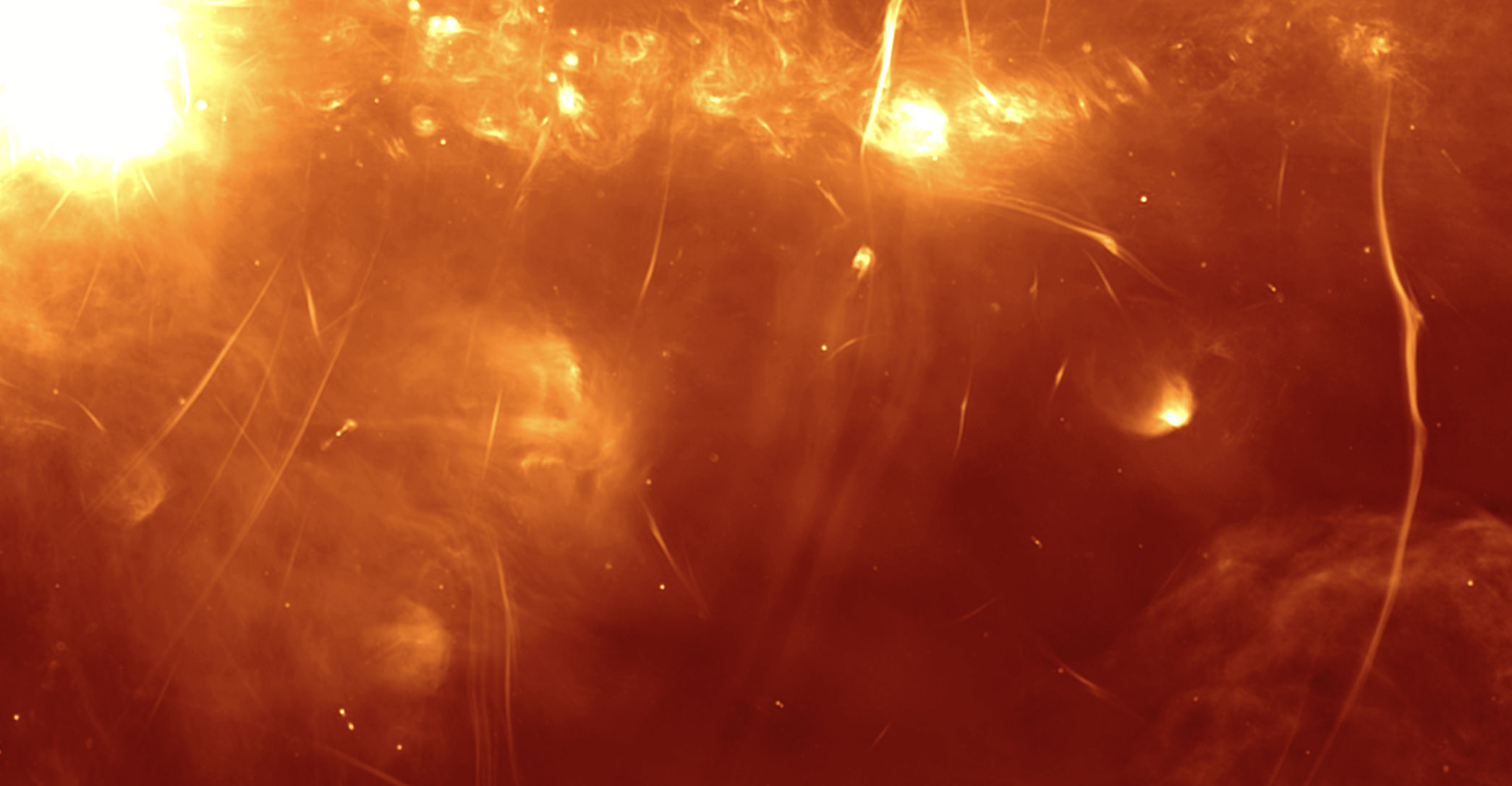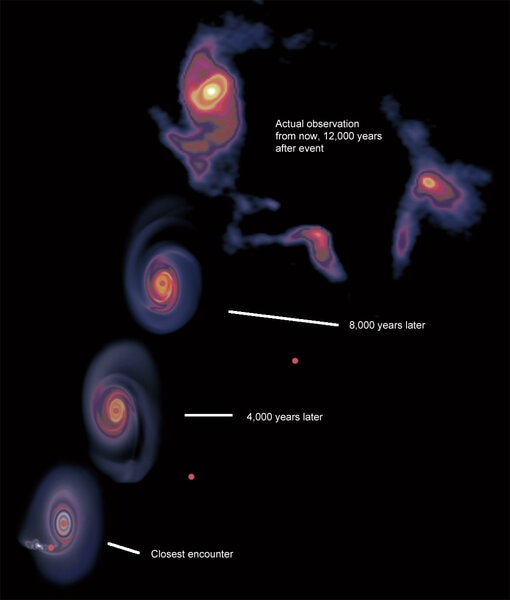Create a free profile to get unlimited access to exclusive videos, sweepstakes, and more!
A huge star forming in the galactic center had a close encounter with another star
Nosy neighbor induces spirals in a newly forming star’s disk.

The center of our galaxy is a mess.
Huge gas and dust clouds, intense magnetic fields, exploding stars… not to mention a supermassive black hole with over four million times the mass of the Sun whipping things up.
It’s not a place you’d necessarily expect to see a lot of stars being born, despite there being a lot of material to form them from. And in fact the rate of star formation in the Central Molecular Zone, or CMZ — where there’s a lot of dust and gas cold enough to form molecules, the raw material for star-baking — is lower than it would normally be for such a place.
But it’s not zero. Stars do form there, and astronomers have found a pretty weird one. Inside the CMZ they found evidence for a star in the process of formation, and it’s massive — even more unusual for the region — and they think they have evidence for it having a decently close encounter with another massive star only 12,000 years ago [link to paper].
This is pretty cool, if only because seeing anything this deep in the galaxy is hard. The dust is so thick that optical light, the kind we see, is completely blocked. But longer wavelengths of light can get through, which is one reason the astronomers used the Atacama Large Millimeter/submillimeter Array, or ALMA, which detects light in the millimeter wavelength range. Another reason is that ALMA is composed of dozens of dishes spread out over the Chilean high plains desert, and connected so that they act as a single unit with a diameter of many kilometers, which gives them incredible resolution. Think of it as very sharp eyesight.
Without it things on the scale of stars forming at the distance of the CMZ, about 26,000 light-years, would be impossible to see. But they used ALMA to look into the region and found an object that has all the features of a star forming, and it holds plenty of surprises, too.
They see a disk of warm dust swirling around, and it’s huge, about 600 billion kilometers across. That’s over 100 times the distance from the Sun to Neptune! So it’s way way bigger than our solar system. That right there is a strong indication a massive star is forming in the center. Looking at how fast it’s rotating, the astronomers estimate the star forming in the center has a mass of about 32 times the Sun, so that’s a beast. Interestingly, judging from how warm and bright the dust is, the disk itself is only about 5 times the mass of the Sun. That means this star is in the last stages of gathering mass.
Surprisingly, they see evidence of two spiral arms in the disk, too. This is seen around low-mass protostars as they’re forming, usually because the disk itself is massive enough to fragment under its own gravity. Clumps in the disk form, and their gravity can create spiral arms in the rotating structure. But the disk has to be cold for that to happen; if it’s too warm then its own internal pressure can prevent this kind of collapse — like a hot air balloon inflates because the warmer air exerts higher pressure on the balloon than cooler air.
However, another way these spirals can form is if an intruder gets too close to the disk: In this case, a passing star. The gravity of the star perturbs the disk, creating local disturbances that can grow as the disk rotates, eventually making spiral arms. We see this in low-mass protostars disks.
This is seen in the new high-mass protostar’s disk as well! There’s a clump of gas about 1/8th of a light year from the disk, and it looks like it’s likely a protostar in the process of formation as well. It’s massive, though not quite as big, probably about 3 times the mass of the Sun. Still, enough to create a commotion in the more massive star’s disk.
To see if that makes sense, first they looked at how close the intruder star would have to get to make the spirals. They did this analytically, meaning they solved the equations of gravity and motion by hand to figure out the best fitting path the marauder took. They find it must have passed as close as 300 billion kilometers some time in the past.
Seeing where it is now and knowing it had to be that close in the past, they then used a numerical solution — number crunching in a computer — to simulate what the disk looked like in the past and now, and got a pretty decent match to what’s seen. The encounter started about 12,000 years ago, and as the two forming stars pulled apart the spirals formed in the more massive star’s disk, while the second star was disturbed as well.
This is a pretty nifty piece of work for several reasons. It shows that close encounters can affect massive stars forming much like they can for lower mass stars, which was thought to be the case but had little observational evidence. It shows that massive stars are forming in the CMZ, which was implied by some earlier observations but not directly seen. And it shows that we can use ALMA to actually see details in forming stars even from our great distance to the galactic center.
And they didn’t even use ALMA in its widest arrangement — they’re planning future observations in that configuration to get even higher resolution images of the star. Hopefully that will support their case that the near pass of the other star is what caused the havoc in the disk.
It wasn’t all that long ago when astronomers had to guess how stars formed based on physics. Now we can see it. And our view keeps getting better.



























